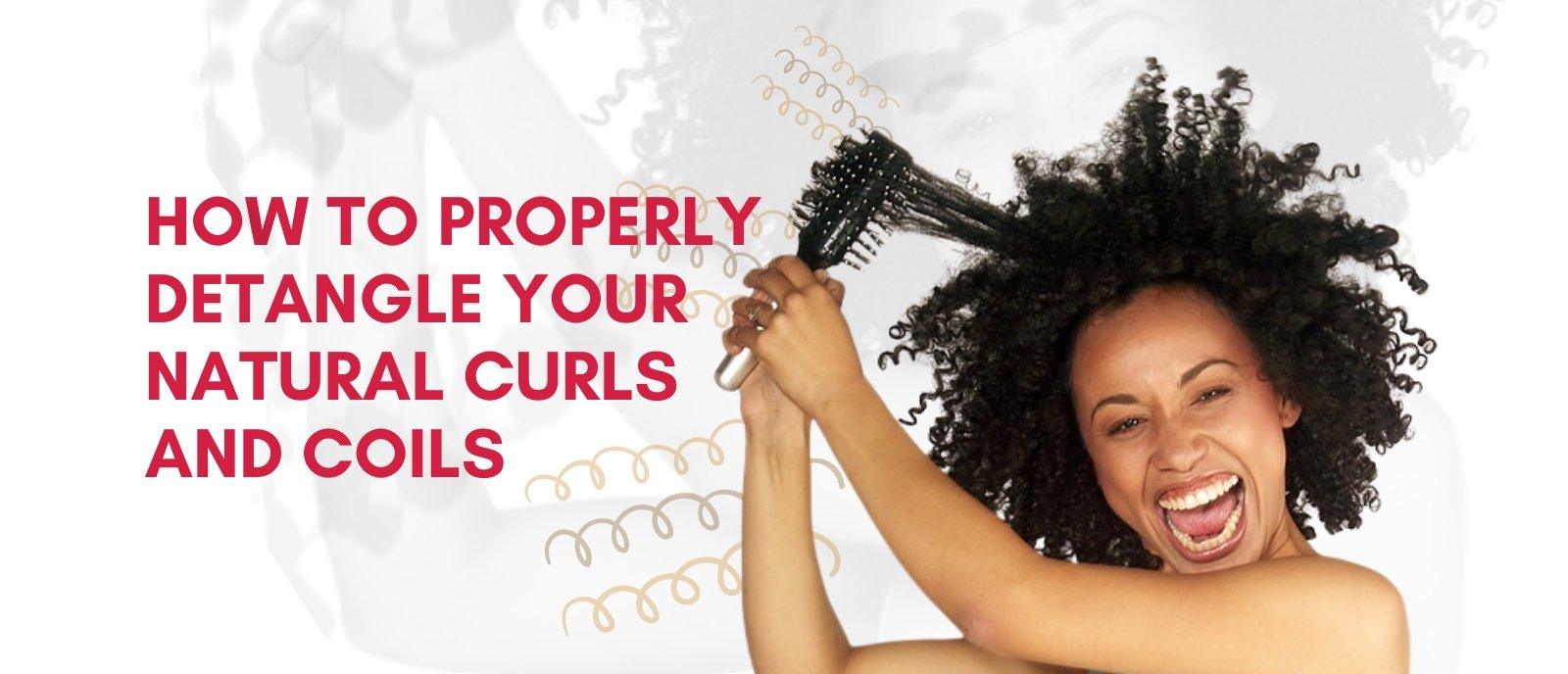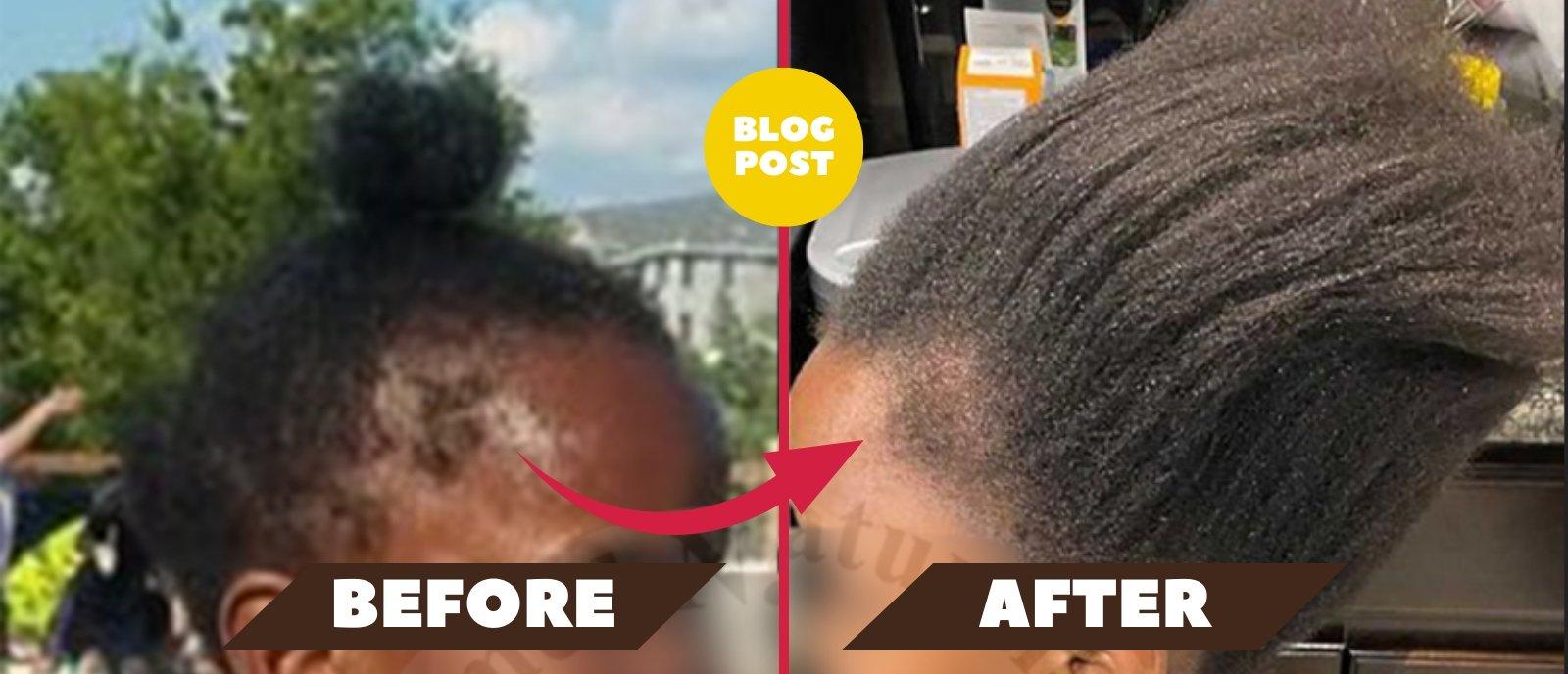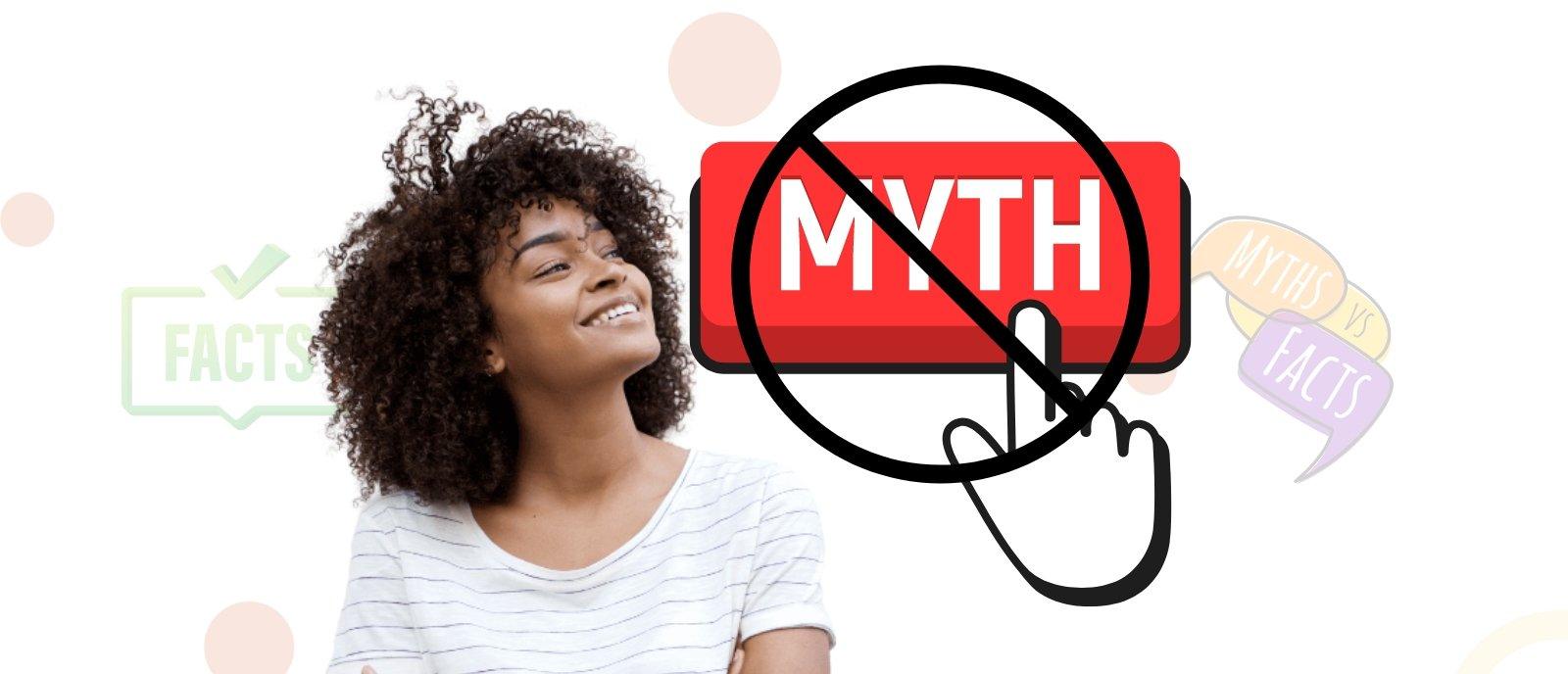
How To Properly Detangle Your Natural Curls and Coils
Let's admit it detangling hair is one of the most difficult process for your natural hair. Detangling natural hair can be a time-consuming process and sometimes painful and would require a lot of patience and if done the right way, it can make the process totally worth it.
Of the many processes that naturals must go through to make their hair grow and stay healthy, detangling is something that most are doing wrong.
So, in order to make it easier for those with natural hair and transitioning alike, we’ve created a fail-safe guide that will school you in the art of detangling, safely.
Why do you need to detangle?
Of course one of the most obvious benefits of detangling your natural hair is growth. When your hair tangled, it is much more prone to breakage. Before we got all confused let me remind everyone again that there is a big difference between shedding and breakage. Shedding is something that all hair does and normal. On average, your hair sheds about 100 strands a day. You can always tell if your hair is shedding by looking at the hair that has fallen out. If the hair has a white bulb at the end then the hair has gone through the natural shedding process. It’s very healthy, and you have nothing to worry about.
On the other hand, breakage is another story. Anything from heat, excess friction, and even the wrong products can cause the hair to break off. When your hair is nice and detangled, it will not break off. Therefore, you are able to retain your hair length.
Another benefit of detangling natural hair is less pain. Our coils are already tight and curly, and if we try to run a comb through it without detangling first, there’s no question that pain is soon to follow.
The final benefit of detangling natural hair without breakage is manageability. One of the perks of being natural is the ability to style your hair in different ways. Natural hair is versatility at its finest, and not having it detangled ahead of time could cost you a lot of time and effort.
Best Method For Detangling
Contrary to popular belief, there is not a one size fits all method for detangling natural hair. A lot of it is determined by your hair type. For example, if you have really thick and tightly coiled hair, you may find it difficult to detangle your tresses without the aid of some type of conditioner with great slip. Those with finer hair may be able to use just water. One thing is for certain when detangling natural hair: you must always use some type of liquid aid when doing it. If you neglect to do this, your hair will break. You can’t run a comb through a dry, tight coil and expect for it to not get damaged. Now, although this step is important for everyone regardless of hair density, hair porosity also plays a role in detangling. Recall that although hair is easier to deal with when it is wet, it also is much more vulnerable. Those with high porosity hair, have hair that is prone to damage since it typically already is damaged. Therefore, you cannot detangle the hair when it is soaking wet like some of the other hair types can. Running a comb through your high porosity hair while it is soaking wet will only damage your hair more. Therefore, wait until it is about 25-50 percent dry until you start to do your detangling.
How Often Should You Detangle Natural Hair?
The less you manipulate it, the more likely it is to grow. Therefore, you do not want to detangle your hair all the time. However, you also don’t want to neglect detangling or it will be prone to tangles.
The best thing to do is to detangle your hair every time you either change hairstyles or wash your hair. If you notice that you’re having to detangle more than twice a week, that’s a sign that you’re over manipulating your hair.The best thing to do is to limit having your hands in your head at all.
Know How To Pick Whether You Detangle Wet, Damp or Dry
When it comes to detangling natural hair, there are many discussions regarding what state your hair should be in when detangling. I’m sure naturalistas were divided into two groups when we are talking about this topic. Some prefer doing it on wet or damp hair, while others go for dry hair.
As general rule, if your hair is damaged and you’re experiencing shedding, you should try dry detangling. Since dry hair is much stronger than the state of wet hair, this method won’t cause as much as trauma to your curly hair. But if you prefer to do it on damp hair, you need to make sure to use the right products to support your efforts and meet your delicate strands halfway.
For severe tangling, finger detangle with hair oil. Try our Glammednaturally Hair Growth Oil or Braid Oil before wet detangling with conditioner!
ALWAYS use Conditioning Products
A good conditioner (and a lot of it!) is key for keeping tangles at bay. Regardless of what state your natural mane is in when you start detangling, it’s important to apply a slippery, conditioning product to make your coils easier to work with Our top choice? Glammednaturallyoil Biotin Conditioner This intensive nourishing treatment is great for natural hair textures, as it helps to repair and strengthen hair, leaving it soft with a lustrous and smooth appearance.
Use the Right Tools
Hair tools play a huge part in detangling natural hair, so it’s important to choose the right ones. So, what are the tools you can use? Your fingers, a nylon bristle brush and a wide-tooth comb.
- Fingers: Though they aren't technically a tool, they are just as effective as a comb or brush and help untangle knots in ways that the other tools can’t. Gently pulling apart the tangled strands will work to incur far less damage than simply combing through the knot over and over again.
- Nylon bristle brush: Since natural hair is very tight and thick, the strands tend to be more fine and prone to breakage. A nylon bristle brush (with a rubber base) helps minimise static and allow safe and gentle penetration.
- Wide-tooth comb: A sturdy wide-tooth comb is both the best and least time-consuming for loosening stubborn knots, as well as your best defence against them in the first place.
Again, you need to find out which one works for your hair.



Laisser un commentaire
Ce site est protégé par hCaptcha, et la Politique de confidentialité et les Conditions de service de hCaptcha s’appliquent.